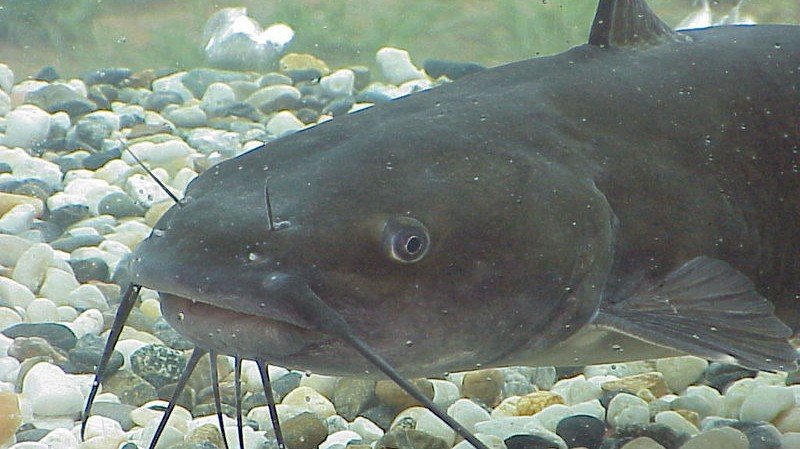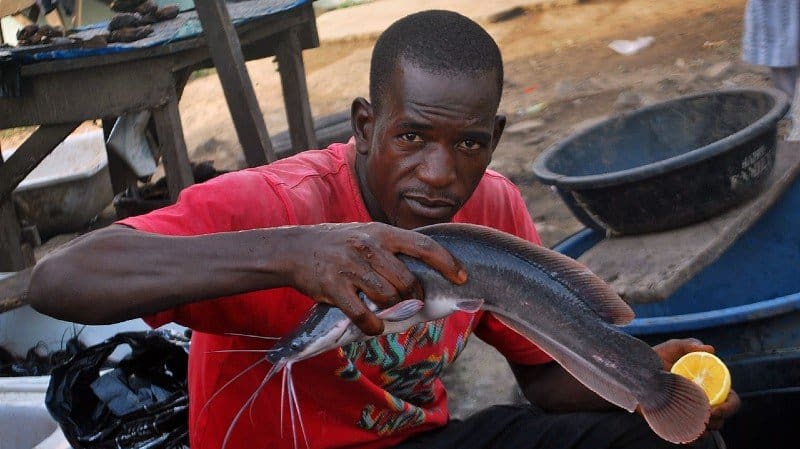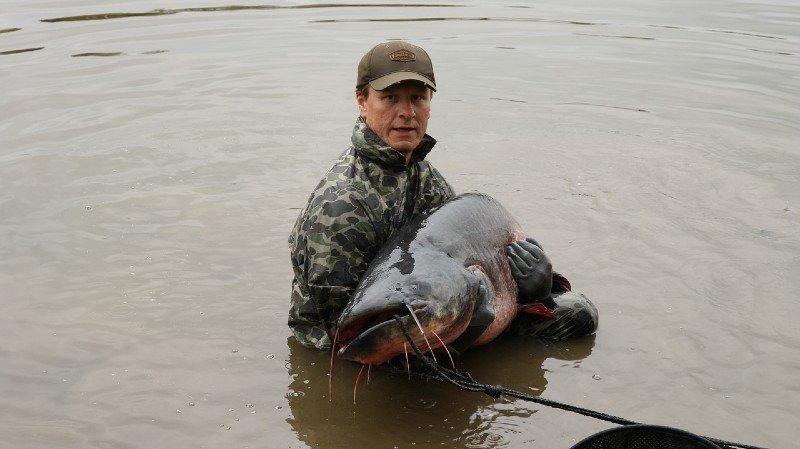Handling catfish is a unique issue among anglers. Many people are convinced handling catfish can be dangerous. There is a long-standing myth that catfish have catfish stingers. The whiskers on a catfish’s face are thought to be poisonous. The fact is, this is not true. Catfish do not have the ability to sting. But that doesn’t mean you don’t need to be cautious when handling them.
Even though catfish stings aren’t a thing, a catfish could still injure you if you don’t know how to handle it. It’s not a sting you need to worry about. It’s the dorsal and pectoral fins of the catfish. Both fins have sharp spines on them. In fact, the spines are sharp enough to pierce human flesh. If you’re not careful, you can sustain a bad injury.
What Are Catfish Whiskers?

The whiskers on a catfish’s face are called barbels. They got the name whiskers because of their similarity to a real cat’s whiskers. Catfish barbels are home to many sense receptors. These specialized cells help a catfish smell and taste. They function a lot like taste buds.
Because these barbels can taste food it helps the catfish feed. Many catfish live in dark, murky places. They thrive in holes and muddy water. The barbels help them find food when they can’t see what they’re looking for.
The barbels are rubbery skin appendages. They can’t harm you in any way. There’s no need to make sure you’re avoiding them.
How to Hold a Catfish From Below

The best way to hold a catfish is to grip it around the upper body behind the pectoral fin. This way the catfish spines can’t reach your hands and puncture your skin. When you grab the fish from underneath it allows you to avoid the dorsal fin as well.
The spines of a catfish’s fins are more dangerous than they may seem. This is where the idea of a sting from a catfish comes from. They aren’t simple spikes that can cut you. The spines of many catfish contain a hemolytic toxin. That means it prevents blood clotting. It’s not poisonous, but it will make the injury bleed more. It also causes swelling at the injury site.
You need to get one hand under the catfish to grasp it. With your hand along its belly you can grasp it from below. Place your thumb behind one pectoral fin. Then you can slip your other fingers behind the opposite fin.
How to Hold a Catfish From Above

You can grip a catfish from above as well. You need to get the butt end of the dorsal spine positioned between your thumb and forefinger. The spines will protrude from the fin the moment you remove the fish from the water. So long as your hand is butting against the rear of the dorsal fin, they will not be able to reach you. With your thumb on the left side of the fish and your other fingers on the right, you should be able to have a firm grip. This will allow you to avoid the dorsal and pectoral fin.
You could grasp the fish from in front of the spines as well. That would require the back of your hand to butt against the front of the dorsal fin. In this scenario, you’re gripping what would be the fish’s neck behind the head. This is a more precarious way to hold a fish. You run the risk of your hands sliding down over the spines. This is not a secure way to hold a catfish.
How to Hold a Big Catfish

A larger trophy blue catfish can weigh well over 100 pounds. It’s rarely a problem that these fish will catch you with their spines. They’re so large that they can be easily avoided. That said, you need extra support for a fish this big. You’ll definitely need two hands to hold larger catfish. Be wary of hand placement to stay away from those pectoral fins.
The bigger danger from large catfish is actually their mouths. Because of the size, when you go in to remove the hook you risk getting bit. Catfish don’t have dangerous teeth necessarily, but they are rough. If it’s still got fight in it and it bites down, it could scrape up your skin. It’s not likely to be the most painful experience of your life. But that doesn’t make it a pleasant experience either. If you can’t avoid it, you want to. Especially considering the issue of bacteria that can get in the wound. A catfish mouth can be a dangerous place.
Be Wary of Fish Slime
There’s a reason catfish are hard to hold when you get one in your hand. That slimy feeling is not the water they live in. Catfish actually produce an antimicrobial slime coating. This makes it especially precarious to try to hold one. It’s a natural defense of the fish to avoid predators.
Things to Remember
While it seems like small catfish may be less of a threat to you, the opposite may be true. The spines of younger fish tend to be smaller and sharper. They are more like needles and can produce more pain. They’re also more likely to pierce your skin. And, with less surface area, there are fewer safe places to grasp on a smaller fish. Always be cautious when taking the smaller catfish out of water.
If you happen to get punctured by a catfish spine, seek medical help as soon as you can. Even though the toxin is not lethal, the spine itself could have broken off in the wound. The bacteria could cause a serious infection. Also, if the spine is stuck in the wound, it may bleed excessively.
The best thing you can do right away is get the wound clean. Wash it and use some kind of antiseptic on the wound. Simple first aid is about all you need in this situation. Once it’s cleaned, dress the wound. It’s a good idea to get a doctor to check it out just in case there is a piece of spine left inside. If you need antibiotics for an infection, they can help you out.
There’s an old school angler trick that says you should rub the wound on the catfish itself. The slime we mentioned earlier does have wound healing abilities. So while it sounds like an old wives’ tale, there may be science behind it. That said, if you’re fishing in dirty water, it may not be the best idea. And it’s no substitute for actually cleaning the wound. Still, some fishermen will swear by this as a method of treating it. The safest bet is to clean and treat it properly.
You’re going to need to handle the catfish whether you are keeping what you catch or releasing it. You can find gloves that are rugged and suitable for handling catfish. The downside is that you lose a degree of sensitivity when you’re wearing. But they can protect you from the spines.
It takes some practice to get the hang of getting a hold of a catfish. Be cautious and be gentle but firm. If you do get poked by a spine, keep calm and treat it. As with any fishing, you’ll get the hang of it in time.











































